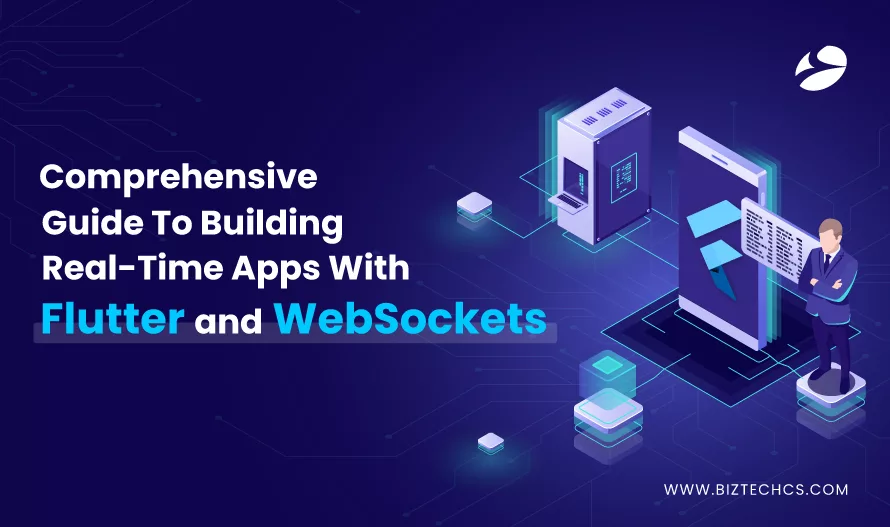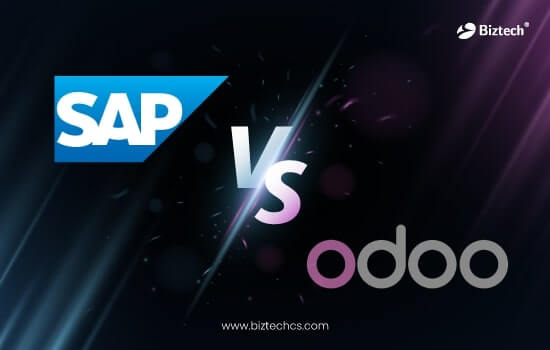2516
Comprehensive Guide To Building Real-Time Apps With Flutter and WebSockets
16 Apr, 2024
7 min read
2516
16 Apr, 2024
7 min read
Table of content

Amidst the rising use of applications, web & mobile both, the demand for real-time applications is soaring high. With the increase in multiplayer online games, live streaming platforms, and instant messaging applications, developing real-time applications is a popularmost choice for businesses.
While Flutter, a Google-backed software development kit (SDK), facilitates the development of cross-platform dynamic applications, technologies like Flutter WebSockets enable the development of real-time functionalities.
In this blog post, we will explore how you can build real-time applications using Flutter WebSockets neatly. You can do it yourself if you have the technical proficiency and resources. Or Hire Flutter Developers and get started!
A real-time application is capable of processing and delivering data instantaneously and swiftly that the user perceives it to be in real-time. It enables customers to engage with content in real-time. The feedback or response from the system is so swift that customers don’t have to wait even a second for it.
Let’s check some examples of real-time applications that we often use!
Want to build such an application with Flutter?
Then, let’s talk about WebSockets first!
Suppose, you have a single, long-lived TCP (Transmission Control Protocol) connection and you want to establish a real-time duplex or two-way communication channel between a client and a server. Websockets are the communication protocol that makes it possible.
WebSockets replace short-lived HTTP connections and allow for instantaneous data exchange between client and server. They can be used with various technologies, such as JS frameworks, Flutter SDK, etc., to create engaging applications.
Here, we will help you with the steps to build real-time applications using WebSocket in Flutter. Before that, let’s explore the WebSocket communication lifecycle.
I. Connection Establishment: A standard HTTP connection is used to send a WebSocket handshake request from the client to the server. In return, a response is sent by the server indicating a successful connection. After the handshake request-response process is complete, the standard HTTP request is converted into a long-lived, duplex communication channel.
II. Open Connection: Once the connection is established, the WebSocket channel Flutter remains in an open state until and unless either the client or server closes it. The open state allows for data or message exchange in real time over the Flutter WebSocket connection.
III. Message/ Information Exchange: Based on the data type you transmit, it could be binary frames, text frames, control frames, etc. The server and Client both can listen to the incoming messages and process them.
IV. Error Handling: You may encounter errors, server failures, or network issues at any point during the WebSocket connection lifecycle. These errors are handled smartly by the client or server by logging it or closing the connection prematurely.
V. Connection Termination: Once the message is exchanged, the connection termination request can be sent by either the server or client by sensing a close frame. If the other party sends a close frame in response, the connection ends neatly.
VI. Cleanup: After the connection is terminated, any/all allocated resources for the connection should be released. It includes cleanup tasks, releasing sockets, closing file handles, etc.
Now that we are familiar with the functioning of WebSockets, let’s check how we can use it for developing Flutter real time apps.
Step 1: Set Up Your Flutter Project
Before getting into the complications of WebSocket, let’s first set up your Flutter CLI to build a Flutter application. Use the Flutter Command Line Interface to start your project.
After the project is created, use cd command to navigate to the project space.
Step 2: Import Essential Packages
Next, you have to import the necessary packages, including WebSocket into your Dart files.
import 'package:flutter/material.dart'; import 'package:web_socket_channel/web_socket_channel.dart';
Step 3: Incorporate WebSocket Package
Now that you have added the WebSocket package, you need to incorporate it into your ‘pubspec.yaml’ file to start using it. Doing this helps establish a connection between the client (Flutter application) and the server.
dependencies:
web_socket_channel: ^2.1.0
Now, run this terminal command to install this package.
Once the incorporation is complete, you have to import the web_socket_channel from the package to your Flutter app.
Remember the WebSocket Communication Lifecycle? We will now perform those steps for real-time Flutter app development.
Step 4: Building a WebSocket Connection
To establish a connection, you need to create a WebSocket channel first. Then, you use the WebSocketChannel.connect() constructor to establish a connection with the URL you provide.
import 'package:web_socket_channel/io.dart';
final channel = IOWebSocketChannel.connect(
Uri.parse('ws://yourWebSocketServer/path'),
);
Step 5: How to Send Data Via WebSocket?
In WebSocket Flutter, you use the sink.add() function of the WebSocketChannel to send data to the server. It acts as a repository that stores the data you want to transmit and then transmits it to the server.
Step 6: How to Receive Data Via WebSocket?
The stream.listen() function is used to listen or receive the sent data over the channel. It could be either a broadcasted message for multiple clients or something specific to you.
Step 7: How to Manage WebSocket Connection Termination?
After you have successfully sent/received messages and no longer need the WebSocket connection, you have to terminate the connection and release the resources so that your Flutter app works smoothly.
That’s how you establish a Flutter WebSocket channel connection, send messages, receive messages, and terminate the connection when complete. You can build various features as needed to create real-time applications using Flutter.
Furthermore, let’s not forget to read the pros and cons of using WebSockets with Flutter.
Pros:
Cons:
P.S.: Want to use Flutter Bloc WebSocket for further state management? Check out our detailed Flutter BLoC tutorial. You can also connect with our developers and seek help for the development of unique real-time applications using Flutter and WebSocket. With our top-vetted talent pool and Flutter expertise, we can help you develop dynamic, real-time applications.
Building real-time features can be beneficial for your app, and at the same time, a challenge for you. But, WebSocketsve to be! With Flutter and WebSockets, you can easily build real-time applications with unique capabilities.
While working with WebSockets may seem like a challenge at first, it is easier than you think. Check out our detailed guide on how to build real-time applications using Flutter and WebSocket and get started.

Odoo
7567
By Biztech
04 Jul, 2025
Odoo
219
By Devik Gondaliya
02 Jul, 2025

Odoo
491
By Devik Gondaliya
25 Jun, 2025